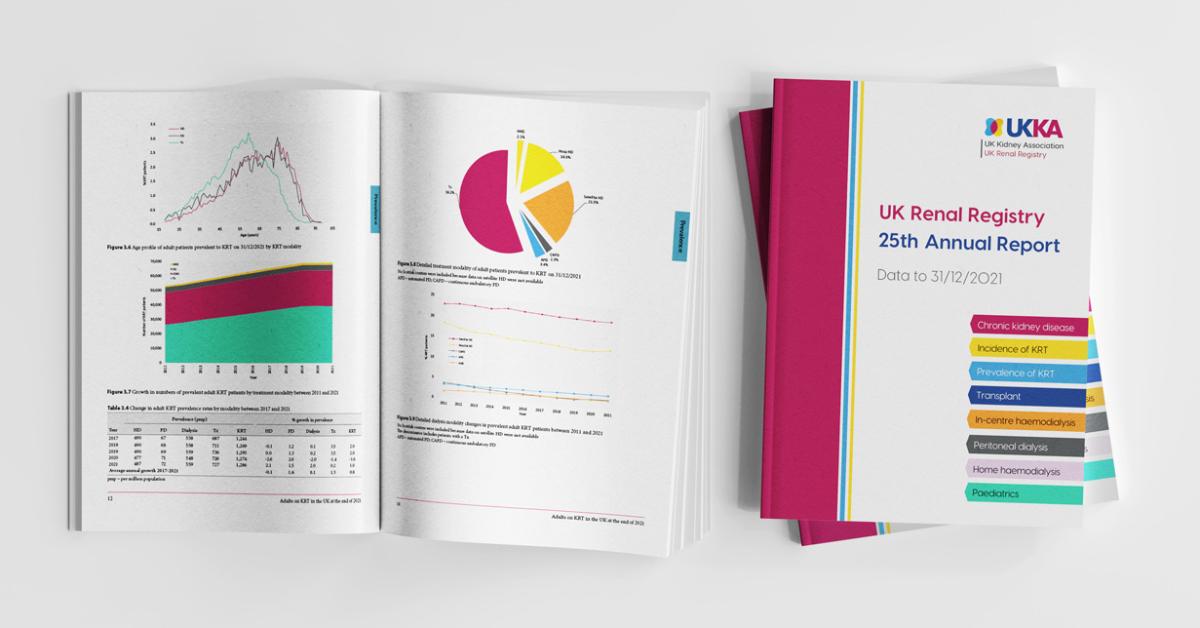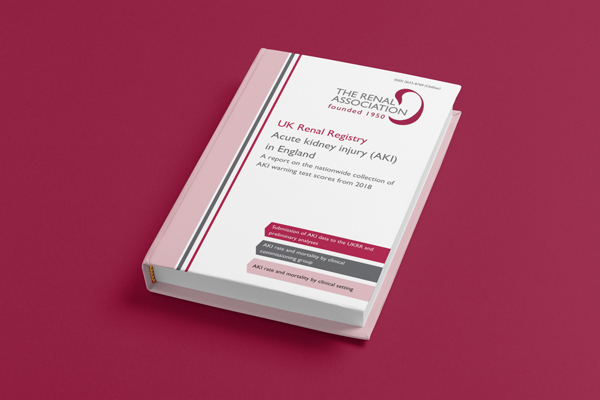Aetiology
Some of the leading causes of CKD in the UK include:
- Diabetes
- Hypertension
- Renovascular disease
- Inherited renal diseases
- Glomerulonephritis
- Reflux nephropathy
- Heart Failure (cardio-renal syndrome)
History taking, examination and investigations may help identify the likely aetiology of CKD in individual cases but where the diagnosis remains uncertain, especially in those patients with a progressive decline in renal impairment consider referral to your local nephrology unit (see referral criteria in the management of patients with CKD section).
History Taking
A good history may help establish the likely aetiology of CKD. The leading causes of CKD in the UK are currently diabetes and hypertension. History taking should clarify not only the presence of these risk factors but should focus on establishing the likelihood that they have contributed to development of CKD. This will include questions about the duration of disease and how good historic glycaemic and blood pressure control has been. Especially in diabetic patients, nephropathy is more likely when other microvascular complications of disease are present; a history of retinopathy (especially proliferative diabetic retinopathy requiring laser treatment) or peripheral neuropathy and diabetic foot disease should be explored.
Other common causes of CKD include renovascular disease, which may be suspected in patient known to have peripheral vascular disease, reflux nephropathy which frequently occurs in patients with a history of recurrent childhood urinary tract infections (UTIs) and enuresis and cardio-renal syndrome observed in patients with moderate/severe or decompensated heart failure. Chronic glomerulonephritis may be suggested in patients with a history of auto-immune disease or evidence of multi system involvement e.g. rash, joint swelling, uveitis, respiratory symptoms or fever. Myeloma is an important but under-recognised cause of renal impairment, especially in the elderly and a history of back pain may be suggestive. Prostatic symptoms in males such as poor stream, nocturia and a sensation of incomplete bladder emptying may raise suspicion of bladder outflow tract obstruction. In males, bladder cancer, and in females, a past history of gynecological malignancy, pelvic surgery, or radiotherapy are additional important risk factors for potential ureteric obstruction.
Medications are commonly implicated in development of renal impairment and a detailed drug history is essential e.g. NSAIDs and lithium use. Drug history should also include questions around the use of any over the counter or herbal treatments and history of illicit substance abuse.
It is important to identify any family history of kidney disease. In cases of autosomal dominant polycystic kidney disease, it is also helpful to know details of disease presentation and progression in relatives and whether anyone is known to have had an intracerebral haemorrhage or sudden death, as the clinical phenotype of disease can vary. If the exact nature of familial kidney disease is unknown the pattern of inheritance may give some clues e.g. X-linked inheritance is seen in Alport syndrome.
The history may also seek to explore any complications of CKD, but it is important to note that the vast majority of patients will be asymptomatic until they develop very advanced renal impairment or uraemia, typically around CKD stage 5 (eGFR<15 mLs/min). Symptoms associated with advanced CKD may include:
- fatigue
- nausea and vomiting
- leg swelling
- breathlessness on exertion
- loss of appetite, loss of weight
- itching
- 'restless legs' syndrome
- Insomnia
- nocturia and polyuria
- bone pain
- peripheral oedema
- symptoms due to anaemia
- amenorrhoea in women
- erectile dysfunction in men.
Examination
When trying to determine the aetiology of CKD, the examination may provide a number of clues:
- Diabetes - Presence of other systemic microvascular complications will increase suspicion of diabetic kidney disease (diabetic nephropathy). Ophthalmoscopy is helpful to identify features of proliferative retinopathy or previous laser treatment. Neurological examination of the foot (typically with a monofilament) can help identify peripheral neuropathy as can evidence of neuropathic foot ulcers, previous lower limb amputation or Charcot foot.
- Hypertension - Blood pressure examination is essential in all patients with kidney disease, it is not only important to help identify the aetiology but is a critical component of patient management. Good blood pressure control can reduce the risk of CKD progression and cardiovascular complications. In patients with advanced CKD volume overload can lead to oedema and hypertension. Ophthalmoscopy can be used to identify evidence of hypertensive changes in the retina, such as silver wiring, arteriovenous nipping and retinal haemorrhages which can be indicative of suboptimal control, at least historically, and increase the likelihood of hypertensive nephropathy.
- Fluid balance - Patients with advanced CKD or underlying nephrotic syndrome may develop significant peripheral oedema. Those with decompensated heart failure at risk of cardio-renal syndrome may also present with significant fluid overload.
- Renovascular disease - Renal bruits may be heard. The presence of femoral bruits and weak or absent peripheral pulses indicates significant peripheral vascular disease, which increases the likelihood of associated renovascular disease.
- Inherited kidney diseases - Polycystic kidneys are often palpable and some patients may also have hepatomegaly due to liver cysts. Patients with Alport's syndrome may require hearing aids for sensorineural hearing loss caused by abnormal collagen IV in the basement membrane of the inner ear.
- Glomerulonephritis - rash, fever, murmur, red eye and joint swelling may point to an underlying multi-system disorder. Significant peripheral oedema may be noted in patients with nephrotic syndrome. Pleural effusions and ascites may also be present.
- Obstructive uropathy - A palpable enlarged bladder is suggestive of outflow tract obstruction. This may be painless if it has developed insidiously over a prolonged period of time. Patients with a hydronephrotic kidney may occasionally complain of loin pain.
Investigations
- eGFR - Any acute decline in eGFR should be repeated within 14 days to exclude an acute kidney injury (AKI) which requires urgent assessment. (See eGFR) (See CKD staging) (see deteriorating renal function).
- Proteinuria - Urine ACR is the first line investigation for proteinuria. It is an essential component of renal function assessment. (see proteinuria).
- Haematuria - haematuria seen in association with proteinuria may be suggestive of an underlying glomerulonephritis.
- Full blood count and iron levels - patients with advanced CKD may develop anaemia of chronic disease (see anaemia). Anaemia may also be observed in those with suspected myeloma.
- Bone Profile (including phosphate and parathyroid hormone (PTH) levels - Patients with advanced CKD may develop elevated phosphate levels and secondary hyperparathyroidism. Hypercalcaemia may suggest underlying malignancy (especially myeloma) and can adversely impact on renal function.
- Bicarbonate - acidosis is common in advanced CKD.
- Immunoglobulins and Serum Free Light Chains - these may be elevated in patients who have myeloma.
- Auto-immune screen - In patients with suspected glomerulonephritis, a soluble immunology screen should be sent. Typically, this will include ANA, ANCA, DsDNA and complements.
- Virology - HIV, Hep B and Hep C screening should be undertaken due to their associations with development of renal disease.
Ultrasound scan
A renal tract ultrasound should be requested in the following patients with CKD.
- When there is accelerated progression of CKD (defined as sustained decrease in eGFR of 25% or more and a change in GFR category within 12 months or a sustained decrease in GFR of 15 ml/min/1.73 m2 per year)
- Patients with visible or persistent invisible haematuria
- Patients with symptoms of urinary tract obstruction
- If there is a family history of polycystic kidney disease and patient is older than 20 years of age.
- Patients with an eGFR of less than 30 ml/min/1.73 m2
- Patients considered by a nephrologist to need a renal biopsy.
Kidney Biopsy
Indications and suitability for a kidney biopsy will be reviewed by a specialist. Percutaneous kidney biopsy remains the gold standard investigation for diagnosis of intrinsic renal disease. Indications include unexplained renal impairment, especially when disease is progressive, to try and identify potentially treatable causes. For patients who present with suspected glomerular disease or interstitial nephritis, a biopsy is important to confirm the diagnosis and inform clinical decision making. The kidney biopsy can also play an important role in prognostication e.g. by quantification of the extent of chronic tissue damage, when risks associated with some treatment may outweigh potential benefit.
Undergoing a kidney biopsy is not without risk however, including a small but significant risk of bleeding which may be life-threatening in rare cases. For this reason, a decision to undertake a kidney biopsy should be carefully considered by clinicians and patients counselled appropriately, especially for those at highest risk (single kidney, uncontrolled hypertension, small kidneys, blood clotting disorders, obesity, frailty and confusion that may impact on a patient's ability to comply with instructions).



